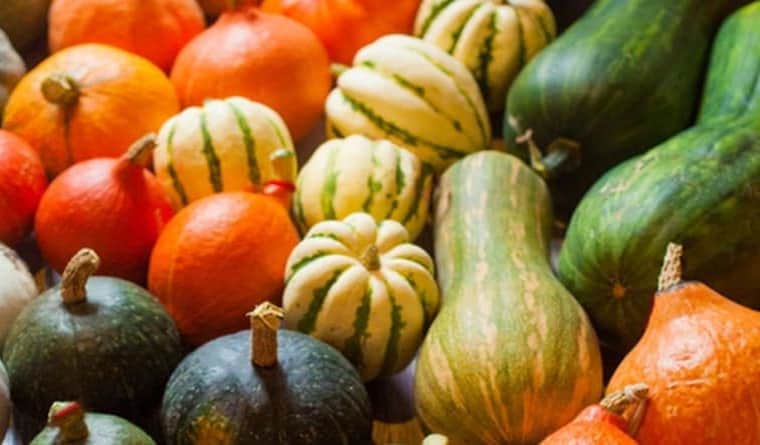As we marvel at the palette of leaves turning this fall season, it’s hard to not notice the varietal availability gracing our market shelves.
When you purchase produce that’s in season, it has richer flavor, is healthier and usually more affordable.
Food is easier to grow in its appropriate season. This makes it more abundant, has time to fully ripen before being pulled off the vine, bush, or tree and transported to your nearest grocer. The natural cycle of crops and produce is meant to support our health and nutritional needs for the very season it’s grown in.
Hydrating foods like watermelon, berries and cucumber keep us hydrated in the summertime heat. Winter squashes and root veggies are great ingredients for hearty stews and soups which offer comfort during the long winter months. As the climate changes from hot to cold, so do our metabolic requirements, as we tend to enjoy more hearty, more fibre dense foods to support our body’s energy requirements.
As the concept of nutrient density continues to gain momentum in my industry, we educate that food miles, being the distance it takes for the food to travel from where its grown to a grocery store near you, means in that process nutrient density naturally declines.
In the fruits category, apples, pears, cranberries and grapes are among the most bountiful choices for seasonal fruits. The obvious micronutrients like vitamin C, fibre and antioxidants are the bonuses your body is rewarded with. If you take a minute to think of more, you probably can – namely pomegranate and rhubarb, which are also award winners in the phytonutrient and antioxidant category.
Among the vegetable contenders are leafy greens including kale, leaf lettuce, mustard greens, radicchio, chicory, chard, watercress and my favourite – arugula. They also naturally alkalize the blood in preparing for a few extra months of the cooler weather to support your immunity.
Beets, although high in sugars, can be very nutritive when used in the right applications of your diet for liver health and a natural nitrate boost. Sweet potatoes are high in vitamin A and carotenoids. They’re also higher in fibre than a white potato with less starch, although double the sugar.
Gourds and squashes offer a big boost of vitamins C and A in a cup serving which is important at this time of year.
Mushrooms including portobello, oyster and cremini are perfect accompaniments to vegetable creations over the season, high in vitamin D, selenium and iron.
Seasonal eating has its benefits for the obvious. Locally grown produce reduces transport time from other regions across the globe. Reducing extended forced ripening in transport, local produce allows a more natural growth process which makes it less likely that it will be subjected to heavy doses of pesticides, herbicides and fungicides.
Seasonal eating also contributes to the consumer making more diverse and creative choices in their repertoire of eating, since each season brings forth new fresh choices.
With an abundance of a certain crop, the cost naturally lowers. When produce is in season, local farmers don’t have extensive travel or storage costs, leading to more manageable grocery bills.
Embracing the beauty of the season also calls for us to be thankful to nature’s bounty for our health requirements in each season we acclimatize to.
By the way, for all you pumpkin spice lovers, don’t forget that those fragrant fall spices can impart wonderful health benefits as well. The sugar may be your dietary pitfall for these recipes, so be creative, be mindful and continue to explore wonderful recipes using your selected seasonal ingredients at home.




